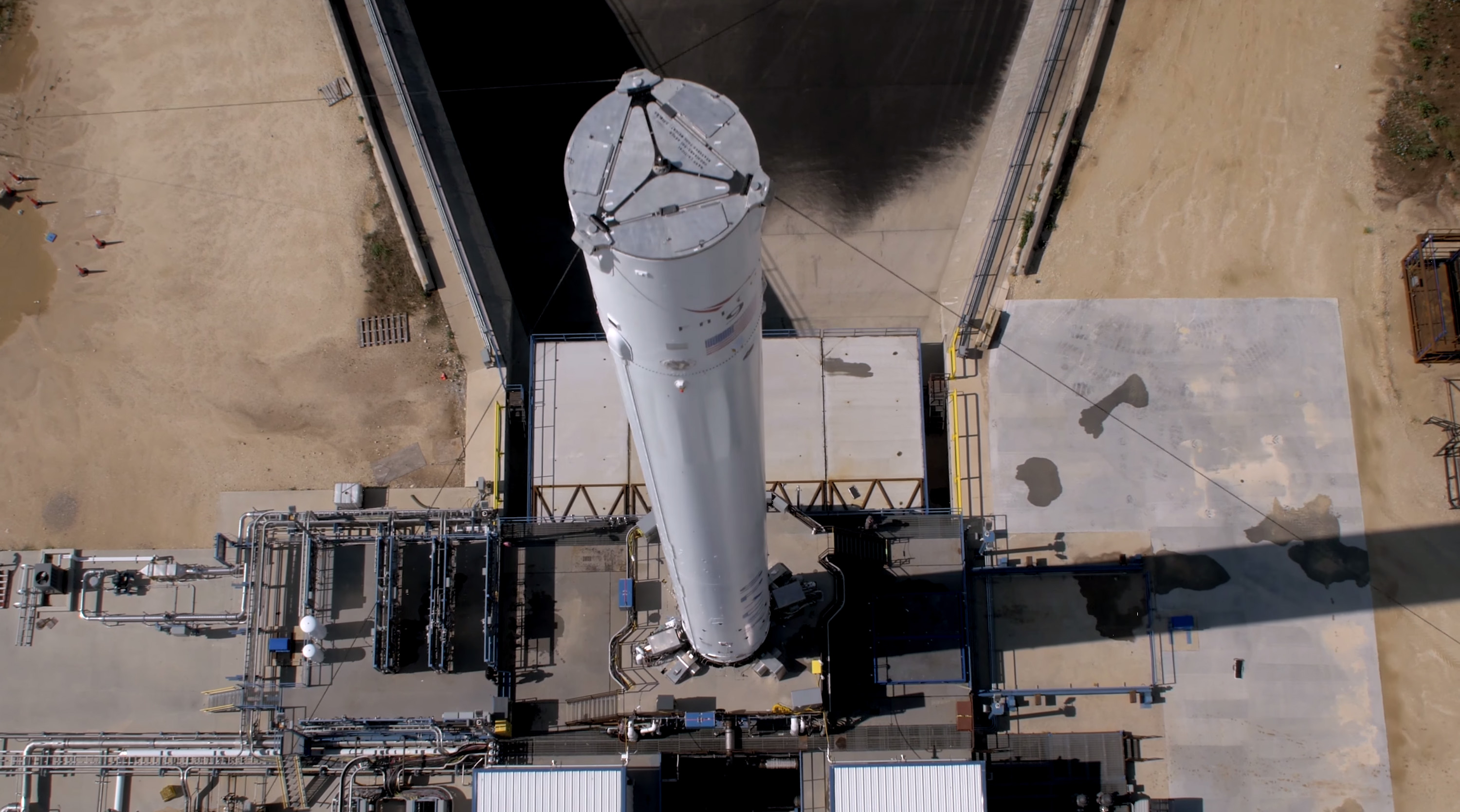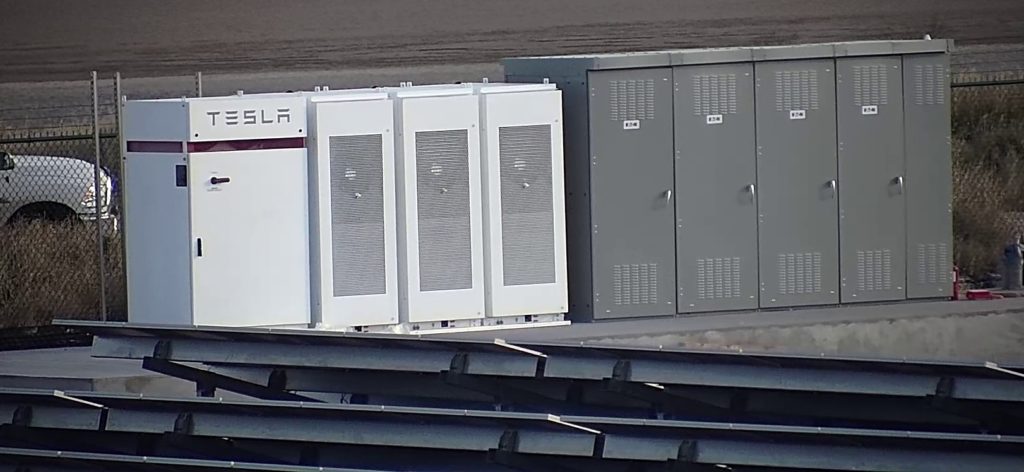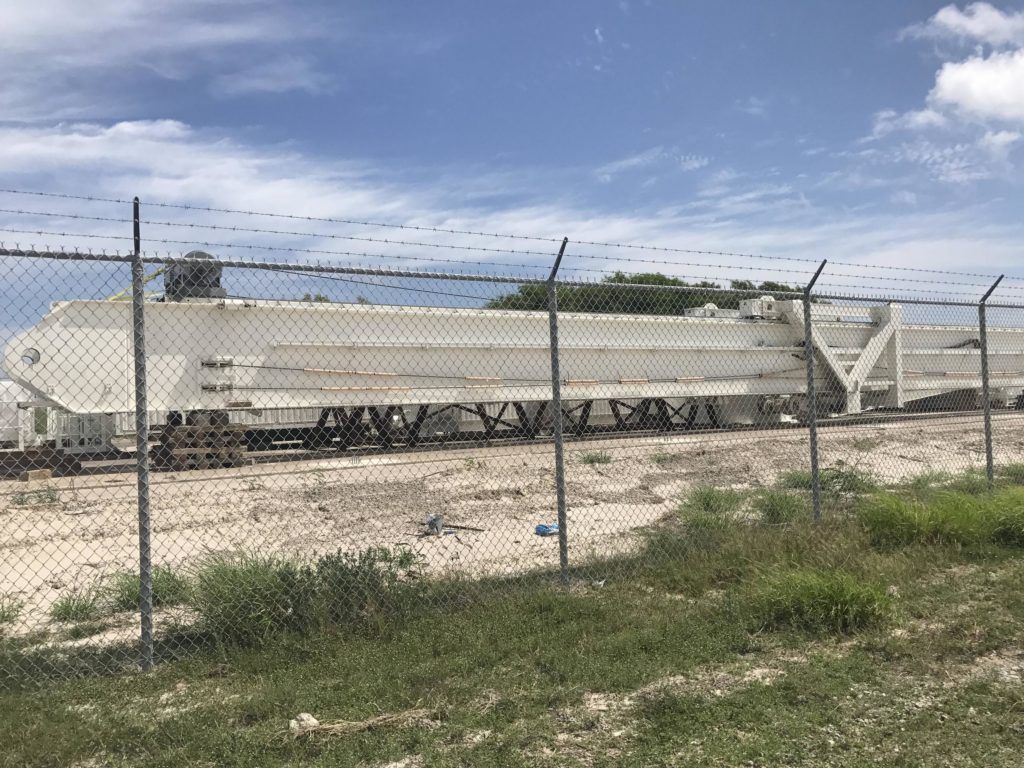

News
SpaceX contemplates Mars rocket factory on the South Texas coast
In statements provided to the Brownsville Herald, a Texan paper dedicated to a South Texas region that includes SpaceX’s Boca Chica launch site, state representative René Oliveira hinted that SpaceX’s plans for the region could go “well beyond conducting launches.”
SpaceX and South Texas
The Herald’s Steve Clark provided a great summary of the history between SpaceX and Texas in recent years, particularly related to the company’s efforts to construct a launch facility in the region. Aside from a considerable effort to create a sturdier foundation for the pad along the sandy, shifting shoreline of Boca Chica, Texas, the company’s work in the region has been rather quiet since the prospective pad’s announcement in 2014. Through a combination of tax incentives and a direct cash infusion, the state of Texas and the Rio Grande Valley region have both in some way strived to strengthen their relationships with SpaceX and solidify the iconic group’s presence in the region.
For Brownsville and Boca Chica, in particular, the latter of which has a population well under 100 individuals, SpaceX’s permanent presence would be a massive boom for the local economy by bringing an infusion of dozens or potentially hundreds of skilled, full-time positions to the quiet region.
In recent months, SpaceX has been very gradually progressing development of facilities around their potential launch site, albeit not the pad itself. These changes include a nearly complete public-private radio communications facility intended to both give college students hands-on experience and communicate with SpaceX’s Crew Dragon capsule as early as late 2018. Intriguingly, a Tesla energy installation has also been recently spotted at the facility.
Finally, a vast crane has been semi-permanently stationed on SpaceX property and had a corrugated shed build around it to protect it from the elements and SpaceX stalking fans in the region.
- Tesla Powerpack battery storage unit being installed at SpaceX’s facility in Boca Chica, Texas [Credit: Nomadd via NASASpaceFlight.com Forum]
- The boom of a giant crane (possibly meant for BFS) seen in late 2017, parked at SpaceX’s Boca Chica facilities. (Reddit /u/ ticklestuff)
More than just a launch pad?
State Rep. Oliveira’s statements can be seen in full below.
“About a year ago, SpaceX came to me with their concept of a new, larger, expanded plan for Boca Chica Beach,” Oliveira said. “The concept went well beyond conducting launches, and would require new commitments for construction, investment and jobs to support the new operations.”
“We looked at the original plan for the launch site, and the chain of work that would be done inside and outside on the rockets that would take off from Boca Chica. The concept SpaceX is examining would bring a lot of that work to Boca Chica, going well beyond the original plan.”
He [State Rep. René Oliveira, D-Brownsville] declined to reveal the details of the new concept for Boca Chica, saying it’s up to SpaceX to detail its plans and associated costs when it makes a request to CCSDC to apply for funding.
The timing of SpaceX concept, reportedly presented to Oliveira in late 2016 or early 2017, strongly indicate that the rocket company is considering a considerable expansion of their aspirations for the South Texas facilities under construction. Partly based on Oliveira’s suggestion that SpaceX and Brownsville “looked at…the chain of work” necessary for rockets to launch Boca Chica, the most obvious conclusion available is that SpaceX is thinking about developing Boca Chica into a veritable rocket city.

A Falcon 9 conducts tests at SpaceX’s McGregor testing facility in central Texas. (SpaceX)
A major problem facing SpaceX’s Mars rocket (BFR) program is dealing with the vehicle’s sheer size, 9m (30 feet) in diameter and at least as tall as Falcon 9. This size would make transporting the vehicle cross-country by road all but impossible, potentially forcing the company to abandon a bulwark of their current Falcon manufacturing strategy. The most obvious solution, as discussed briefly by CEO Elon Musk and President Gwynne Shotwell, would be to build a rocket factory where the launch pad is located. Boca Chica is thus almost certainly a prime location under SpaceX’s consideration for both the launch complex and factory needed to build and operate BFR. And this argument has been strengthened in recent months by statements from both executives hinting that prototype BFR spaceship (BFS) tests could begin in South Texas as soon as early 2019.
To say that the creation of such a manufacturing and launch infrastructure would transform the region would be an understatement. The sheer shock value of a small city being able to lay claim to the only private orbital launch complex in the US would be valuable in its own right, not to mention the distinct possibility that such a facility might one day launch the first humans to Mars. If the educated speculation above is, in fact, the truth of the matter, SpaceX can be expected to begin earnestly petitioning the local and state governments for additional public funds to partially support the major undertaking. Most importantly, the company would almost certainly need to procure an updated or wholly new environmental impact assessment from the FAA before being allowed to begin construction beyond the scope of the original 2014 grant.
Teslarati – Instagram – Twitter
Tom Cross – Twitter
Pauline Acalin – Twitter
Eric Ralph – Twitter
Elon Musk
Tesla investors will be shocked by Jim Cramer’s latest assessment
Jim Cramer is now speaking positively about Tesla, especially in terms of its Robotaxi performance and its perception as a company.

Tesla investors will be shocked by analyst Jim Cramer’s latest assessment of the company.
When it comes to Tesla analysts, many of them are consistent. The bulls usually stay the bulls, and the bears usually stay the bears. The notable analysts on each side are Dan Ives and Adam Jonas for the bulls, and Gordon Johnson for the bears.
Jim Cramer is one analyst who does not necessarily fit this mold. Cramer, who hosts CNBC’s Mad Money, has switched his opinion on Tesla stock (NASDAQ: TSLA) many times.
He has been bullish, like he was when he said the stock was a “sleeping giant” two years ago, and he has been bearish, like he was when he said there was “nothing magnificent” about the company just a few months ago.
Now, he is back to being a bull.
Cramer’s comments were related to two key points: how NVIDIA CEO Jensen Huang describes Tesla after working closely with the Company through their transactions, and how it is not a car company, as well as the recent launch of the Robotaxi fleet.
Jensen Huang’s Tesla Narrative
Cramer says that the narrative on quarterly and annual deliveries is overblown, and those who continue to worry about Tesla’s performance on that metric are misled.
“It’s not a car company,” he said.
He went on to say that people like Huang speak highly of Tesla, and that should be enough to deter any true skepticism:
“I believe what Musk says cause Musk is working with Jensen and Jensen’s telling me what’s happening on the other side is pretty amazing.”
Tesla self-driving development gets huge compliment from NVIDIA CEO
Robotaxi Launch
Many media outlets are being extremely negative regarding the early rollout of Tesla’s Robotaxi platform in Austin, Texas.
There have been a handful of small issues, but nothing significant. Cramer says that humans make mistakes in vehicles too, yet, when Tesla’s test phase of the Robotaxi does it, it’s front page news and needs to be magnified.
He said:
“Look, I mean, drivers make mistakes all the time. Why should we hold Tesla to a standard where there can be no mistakes?”
It’s refreshing to hear Cramer speak logically about the Robotaxi fleet, as Tesla has taken every measure to ensure there are no mishaps. There are safety monitors in the passenger seat, and the area of travel is limited, confined to a small number of people.
Tesla is still improving and hopes to remove teleoperators and safety monitors slowly, as CEO Elon Musk said more freedom could be granted within one or two months.
News
Tesla launches ultra-fast V4 Superchargers in China for the first time
Tesla has V4 Superchargers rolling out in China for the first time.

Tesla already has nearly 12,000 Supercharger piles across mainland China. However, the company just initiated the rollout of the ultra-fast V4 Superchargers in China for the first time, bringing its quick-charging piles to the country for the first time since their launch last year.
The first batch of V4 Superchargers is now officially up and running in China, the company announced in a post on Chinese social media outlet Weibo today.
The company said in the post:
“The first batch of Tesla V4 Superchargers are online. Covering more service areas, high-speed charging is more convenient, and six-layer powerful protection such as rain and waterproof makes charging very safe. Simultaneously open to non-Tesla vehicles, and other brands of vehicles can also be charged. There are more than 70,000 Tesla Superchargers worldwide. The charging network layout covers 100% of the provincial capitals and municipalities in mainland China. More V4 Superchargers will be put into use across the country. Optimize the charging experience and improve energy replenishment efficiency. Tesla will accompany you to the mountains, rivers, lakes, and seas with pure electricity!”
The first V4 Superchargers Tesla installed in China are available in four cities across the country: Shanghai, Zhejiang, Gansu, and Chongqing.

Credit: Tesla China
Tesla has over 70,000 Superchargers worldwide. It is the most expansive and robust EV charging network in the world. It’s the main reason why so many companies have chosen to adopt Tesla’s charging connector in North America and Europe.
In China, some EVs can use Tesla Superchargers as well.
The V4 Supercharger is capable of charging vehicles at speeds of up to 325kW for vehicles in North America. This equates to over 1,000 miles per hour of charging.
Elon Musk
Elon Musk hints at when Tesla could reduce Safety Monitors from Robotaxi
Tesla could be reducing Safety Monitors from Robotaxi within ‘a month or two,’ CEO Elon Musk says.

Elon Musk hinted at when Tesla could begin reducing Safety Monitors from its Robotaxis. Safety Monitors are Tesla employees who sit in the front passenger seat during the driverless rides, and are there to ensure safety for occupants during the earliest rides.
Tesla launched its Robotaxi fleet in Austin last Sunday, and after eight days, videos and reviews from those who have ridden in the driverless vehicles have shown that the suite is safe, accurate, and well coordinated. However, there have been a few hiccups, but nothing that has put anyone’s safety in danger.
A vast majority — close to all of the rides — at least according to those who have ridden in the Robotaxi, have been performed without any real need for human intervention. We reported on what was the first intervention last week, as a Safety Monitor had to step in and stop the vehicle in a strange interaction with a UPS truck.
Watch the first true Tesla Robotaxi intervention by safety monitor
The Tesla and UPS delivery truck were going for the same street parking space, and the Tesla began to turn into it. The UPS driver parallel parked into the spot, which was much smaller than his truck. It seemed to be more of an instance of human error instead of the Robotaxi making the wrong move. This is something that the driverless cars will have to deal with because humans are aggressive and sometimes make moves they should not.
The Safety Monitors have not been too active in the vehicles. After all, we’ve only seen that single instance of an intervention. There was also an issue with the sun, when the Tesla braked abnormally due to the glare, but this was an instance where the car handled the scenario and proceeded normally.
With the Robotaxi fleet operating impressively, some are wondering when Tesla will begin scaling back both the Safety Monitors and Teleoperators that it is using to ensure safety with these early rides.
CEO Elon Musk answered the inquiry by stating, “As soon as we feel it is safe to do so. Probably within a month or two.”
As soon as we feel it is safe to do so.
Probably within a month or two. We continue to improve the Tesla AI with each mile driven.
— Elon Musk (@elonmusk) June 30, 2025
Musk’s response seems to confirm that there will be fewer Teleoperators and Safety Monitors in the coming months, but there will still be some within the fleet to ensure safety. Eventually, that number will get to zero.
Reaching a point where Tesla’s Robotaxi is driverless will be another significant milestone for the company and its path to fully autonomous ride-sharing.
Eventually, Tesla will roll out these capabilities to consumer-owned vehicles, offering them a path to generate revenue as their car operates autonomously and completes rides.
For now, Tesla is focusing on perfecting the area of Austin where it is currently offering driverless rides for just $4.20 to a small group of people.
-

 News5 days ago
News5 days agoTesla Robotaxi’s biggest challenge seems to be this one thing
-

 News2 weeks ago
News2 weeks agoTesla confirms massive hardware change for autonomy improvement
-

 Elon Musk2 weeks ago
Elon Musk2 weeks agoElon Musk slams Bloomberg’s shocking xAI cash burn claims
-

 News2 weeks ago
News2 weeks agoTesla China roars back with highest vehicle registrations this Q2 so far
-

 News2 weeks ago
News2 weeks agoTesla features used to flunk 16-year-old’s driver license test
-

 News2 weeks ago
News2 weeks agoTesla dominates Cars.com’s Made in America Index with clean sweep
-

 News2 weeks ago
News2 weeks agoTexas lawmakers urge Tesla to delay Austin robotaxi launch to September
-

 News2 weeks ago
News2 weeks agoTesla’s Grok integration will be more realistic with this cool feature























